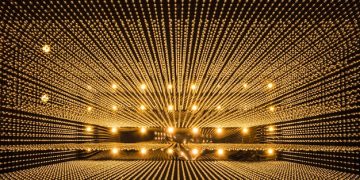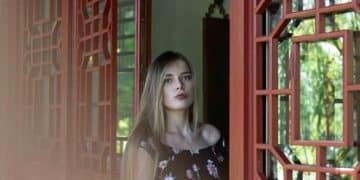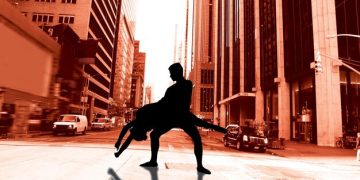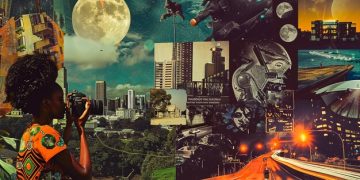K-Drama Cinematography: Visual Storytelling in Award-Winning Series
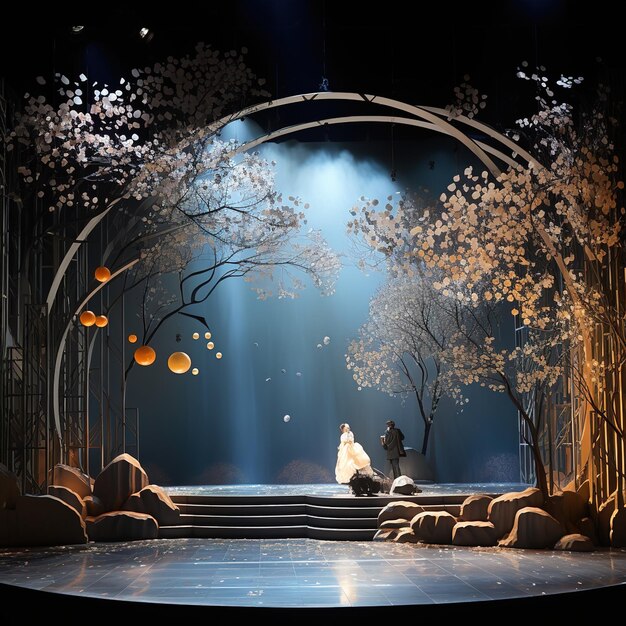
Achieving global acclaim, K-Drama cinematography elevates visual storytelling through meticulous techniques, transforming narratives into immersive experiences that captivate international audiences and earn prestigious awards.
K-dramas have transcended their regional origins, captivating global audiences with compelling narratives, stellar performances, and, notably, a distinctive visual aesthetic. The art of K-Drama cinematography: analyzing the visual storytelling techniques used in 3 award-winning series unveils how these productions skillfully employ camera work, lighting, and color to deepen emotional resonance and enhance narrative impact. This exploration delves into the masterful techniques that elevate K-dramas from mere entertainment to true cinematic experiences.
The Evolution of Visuals in K-Drama Narratives
Korean dramas have undergone a remarkable evolution in their visual presentation, moving far beyond simple televised entertainment. Early K-dramas often relied on straightforward camera angles and basic lighting, prioritizing dialogue and plot development. However, as the industry matured and gained international recognition, there was a clear shift towards more sophisticated cinematic practices.
This transformation reflects a growing ambition within the Korean entertainment industry to compete on a global stage, not just with compelling stories but with visually stunning productions. Key to this evolution has been the adoption of advanced camera technologies and a more deliberate approach to visual storytelling.
From Functional to Expressive Cinematography
Initially, cinematography in K-dramas served primarily a functional purpose: to show the action and the characters. Today, it actively contributes to the narrative, conveying unspoken emotions, setting the mood, and even foreshadowing events. Filmmakers now explore a wider range of techniques, from sweeping drone shots captured during the golden hour to intimate close-ups that magnify a character’s inner turmoil.
- Enhanced emotional depth: Visuals are crafted to amplify feelings.
- Subtle narrative cues: Camera work can hint at plot twists.
- Immersive world-building: Scenic shots transport viewers into the story’s setting.
- Technological advancements: Better equipment allows for more creative freedom.
The dedication to visual perfection is also evident in the painstaking attention to detail in set design and costume, ensuring that every element on screen contributes cohesively to the overall aesthetic. This holistic approach ensures that the visual component is never an afterthought but an integral part of the artistic vision, deeply influencing how stories are perceived and felt by the audience.
Modern K-dramas continually push the boundaries of what is possible within television production, creating immersive experiences that are often indistinguishable from high-budget films. This commitment to visual excellence is a driving force behind their immense popularity and critical acclaim worldwide.
“Parasite” (Film, 2019): A Masterclass in Socio-Spatial Cinematography
While “Parasite” is a film and not a K-drama series, its groundbreaking cinematography by Hong Kyung-pyo set an unparalleled standard for visual storytelling that heavily influenced subsequent K-drama productions. The film’s use of space and verticality is not merely aesthetic; it is a fundamental element of its social commentary, defining the characters’ lives and struggles.
The cinematography meticulously crafts a visual hierarchy that mirrors the characters’ economic and social standing. The cramped, subterranean dwelling of the Kim family contrasts sharply with the expansive, minimalist mansion of the Parks. Such deliberate spatial design provides a constant visual metaphor for class disparity, enhancing the narrative without needing explicit dialogue.
Using Space as a Character
Hong Kyung-pyo masterfully employs wide-angle lenses to emphasize the vastness of the Park household, often making the Kim family members appear small and insignificant within it. Conversely, the Kim’s basement apartment is shown in tight, claustrophobic frames, conveying their desperate living conditions and mirroring their constrained social mobility. The subtle shifts in perspective, such as looking up from the Kims’ home or down into the Parks’, subtly reinforce the power dynamics.
- Vertical framing: Emphasizes class hierarchy (upstairs/downstairs).
- Contrasting environments: Visually segregates the rich and poor families.
- Psychological impact: The spaces reflect the characters’ mental states.
- Symbolic movements: Characters literally ascend and descend through different social strata.
Lighting is another crucial tool in “Parasite.” The Kims’ world is often bathed in a dingy, artificial glow, relying on fluorescent tubes and dim natural light that barely penetrates their semi-basement apartment. In stark contrast, the Park mansion is awash with warm, inviting natural light, particularly through its large windows, symbolizing their access to comfort and privilege. This distinction is subtle yet powerful, guiding the viewer’s emotional response without overt manipulation.
“Parasite” showcases how expert cinematography can elevate a story beyond words, making environments themselves characters in the narrative. This thoughtful and precise visual language not only helped “Parasite” achieve global critical acclaim but also inspired a new generation of K-drama directors and cinematographers to explore similar depths in their visual storytelling, particularly in portraying complex social issues.
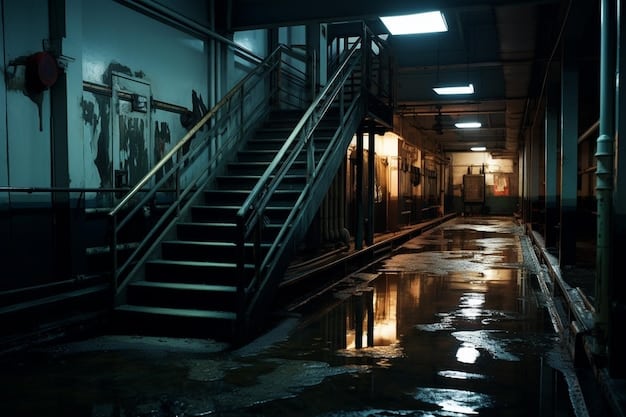
“Squid Game” (Series, 2021): Bold Colors and Striking Symbolism
“Squid Game” became a global phenomenon not just for its gripping plot but also for its distinctive and highly symbolic cinematography. The series’ visual style is characterized by its audacious use of vibrant colors, symmetrical compositions, and unsettling contrasts, which collectively enhance its dystopian narrative and thematic depth.
The cinematography in “Squid Game” is designed to be highly stylized and intentional, creating an artificial world that underscores the brutality disguised by seemingly childlike aesthetics. The vibrant color palette, particularly the stark reds, greens, and blues, is meticulously chosen to evoke specific emotional responses and reinforce the game’s deceptive nature.
A World of Controlled Chaos
One of the most striking visual techniques is the pervasive use of symmetrical framing. This creates a sense of order and control, which ironically contrasts with the chaos and desperation of the participants. The visually perfect compositions make the shocking violence even more jarring, highlighting the perverse aestheticization of death within the game. The camera often adopts an objective, almost detached perspective, mimicking the surveillance of the game masters.
- Vivid color palette: Uses bright colors to mask dark themes.
- Symmetrical compositions: Imposes a false sense of order and control.
- Deceptive aesthetics: Juxtaposes childlike imagery with brutal reality.
- Strategic lighting: Creates stark contrasts between light and shadow.
The set designs also play a crucial role in “Squid Game’s” visual storytelling. The vast, colorful arenas where the games take place are reminiscent of children’s playgrounds, yet they are arenas of life and death. The iconic staircase, with its Escher-like complexity, visually traps the characters, symbolizing their inescapable predicament. The cinematography here elevates the setting from a mere backdrop to an active participant in the story, amplifying the psychological impact on both characters and viewers.
Each game within “Squid Game” has its own unique visual signature, from the blood-red giant doll in “Red Light, Green Light” to the pastel-colored labyrinth of the dormitories. This consistent yet varied visual approach maintains viewer engagement while continually reinforcing the series’ core themes of capitalism, inequality, and human desperation. The visual grammar of “Squid Game” ensures that its message resonates powerfully, leaving a lasting impression long after the final episode.
“Vincenzo” (Series, 2021): Blending Dark Comedy with High-Fashion Aesthetics
“Vincenzo” stands out for its bold and glamorous cinematography, masterfully blending elements of dark comedy, legal thriller, and crime drama. The series, starring Song Joong-ki, utilizes a distinctive visual style that emphasizes its high-stakes narrative, sophisticated character design, and dramatic flair. The cinematography is not just about capturing scenes; it is about creating an entire aesthetic world that is both alluring and menacing.
The visual approach in “Vincenzo” is characterized by its sleek, polished look, incorporating rich color schemes and elegant compositions. The series often employs a cinematic quality with wide shots that capture Seoul’s urban grandeur and intimate close-ups that highlight the nuances of character expressions. This visual opulence serves to complement Vincenzo Cassano’s sophisticated persona and his world of organized crime.
The Glamour of Morality in Grey
One of the key visual techniques is the strategic use of contrasting environments. Vincenzo’s luxurious penthouse and bespoke suits stand in stark opposition to the rustic charm of Geumga Plaza, which he later adopts as his base. The cinematography often visually juxtaposes these worlds, highlighting the clash between his gangster past and his newfound community. The use of low-key lighting in darker, suspenseful scenes further enhances the dramatic tension, while brighter, more stylized lighting infuses humor into comedic moments.
- Opulent aesthetics: Reflects characters’ sophisticated lifestyles.
- Contrasting settings: Highlights the clash of Vincenzo’s worlds.
- Dynamic camera movements: Adds energy to action and dialogue.
- Fashion-forward visuals: Elevates character styling as part of the narrative.
The show’s cinematography also plays a significant role in establishing the tone for its dark humor. Visual gags are often enhanced by precise framing and timing, adding an extra layer of enjoyment for the viewer. Whether it’s a slow-motion shot of Vincenzo performing a dramatic action or a quick cut to a character’s exaggerated reaction, the camera work is always active in delivering both comedic punch and dramatic weight.
“Vincenzo” demonstrates how cinematography can be as multifaceted as its plot, seamlessly shifting between high-octane action, tense legal battles, and genuinely funny moments. The visual grandeur makes the illegal activities appear almost suave, blurring the lines of morality and making the anti-hero protagonist incredibly compelling. This series exemplifies K-drama’s ability to fuse complex storytelling with a visually engaging and distinct aesthetic.
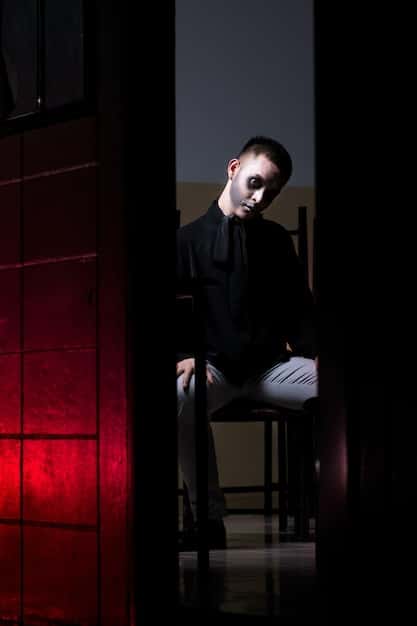
Common Threads in K-Drama Cinematography
While each K-drama displays a unique visual signature, overarching trends and techniques are evident across many successful productions. These common threads highlight a dedication to elevating visual storytelling beyond conventional methods, distinguishing K-dramas in the global entertainment landscape.
A prevalent technique is the intentional use of color palettes. K-dramas often employ meticulously chosen hues to set mood, distinguish characters, or symbolize narrative elements. Whether it’s the warm, inviting tones of a romantic comedy or the cool, desaturated palette of a psychological thriller, color is a powerful, non-verbal narrative tool that evokes emotional responses and reinforces genre conventions.
Beyond the Shot: The Emotional Palette
Another strong commonality is the emphasis on composition and framing. K-dramas frequently utilize wide shots to establish scenic beauty and grand scale, often employing drones for breathtaking aerial views. Concurrently, intimate close-ups are used extensively to convey subtle emotions and intensify character interactions. This balance between broad panoramas and detailed focus creates a rich and dynamic visual experience.
- Expressive color grading: Defines mood and character arcs.
- Dynamic camera movement: Engages the viewer with fluid transitions.
- Strategic use of light: Emphasizes drama and highlights key elements.
- Deep focus shots: Maintains clarity across multiple planes, enriching detail.
Lighting is also a critical element that K-drama cinematographers masterfully manipulate. From naturalistic lighting that mimics real-world conditions to highly stylized, dramatic lighting that creates suspense or fantasy, the control over light and shadow is paramount. This careful orchestration of light often enhances the emotional weight of a scene, guiding the viewer’s eye and adding depth to the visual narrative.
Ultimately, a shared commitment to meticulous detail, innovative techniques, and an understanding of how visuals can amplify narrative and emotion underpins the success of award-winning K-dramas. This consistent pursuit of visual excellence ensures that each series is not just watched but experienced, fostering deeper connections with audiences worldwide.
The Impact of Cinematography on Global Appeal
The sophisticated cinematography in K-dramas plays a pivotal role in their burgeoning global appeal. Beyond compelling storylines and charismatic actors, it is the distinctive visual language that often transcends cultural and linguistic barriers, making these series accessible and engaging for international audiences. The universal nature of visual storytelling allows for emotional resonance that transcends dialogue.
By employing techniques that are cinematically rich and stylistically unique, K-dramas offer a fresh perspective that stands out amidst a crowded global entertainment market. The high production values and artistic integrity evident in their visual execution elevate them to a premium product, attracting viewers who appreciate visual artistry.
Breaking Barriers with Visuals
The ability of cinematography to convey complex emotions and narratives without relying solely on spoken language is a significant advantage. A beautifully composed shot or a precisely timed camera movement can communicate sadness, joy, suspense, or romance universally. This visual fluency bridges gaps for viewers unfamiliar with Korean culture or language, allowing them to connect with the story on a deeper, more intuitive level.
- Universal emotional connection: Visuals bypass language barriers.
- High production value perception: Attracts diverse viewership.
- Distinctive aesthetic identity: Sets K-dramas apart globally.
- Enhanced narrative understanding: Visual cues clarify complex plots.
Furthermore, the aesthetic appeal generated by expert cinematography often makes K-dramas highly shareable and discussable on social media platforms. Visually striking scenes become iconic, contributing to viral trends and sparking international conversations. This organic promotion further amplifies their reach and fosters a global community of fans who bond over shared visual experiences.
In essence, K-drama cinematography has become a silent ambassador, inviting viewers from around the world to immerse themselves in unique stories. It transforms television into a global art form, demonstrating that exceptional visual storytelling is a universal language capable of captivating hearts and minds across diverse cultures and demographics.
Future Trends in K-Drama Visual Storytelling
As K-dramas continue to dominate global screens, their cinematography is poised for further innovation, driven by technological advancements and evolving viewer expectations. The industry’s commitment to pushing visual boundaries suggests an exciting future where even more immersive and stylistically diverse productions will emerge.
One prominent trend will likely be the increased integration of virtual production techniques. Inspired by advancements in blockbuster films, K-dramas may use LED walls and real-time rendering to create elaborate, realistic backgrounds without extensive physical sets or location shoots. This allows for greater creative control and the ability to depict fantastical worlds with stunning fidelity, further blurring the lines between reality and fiction.
Innovations on the Horizon
The use of advanced camera systems, including robotic camera arrays and FPV (First Person View) drones, will become more commonplace. These tools enable incredibly dynamic and complex shots that were once prohibitively expensive or technically challenging, opening new avenues for narrative expression. Imagine intricate tracking shots through bustling markets or breathtaking aerial sequences that place the viewer directly into the heart of the action.
- Virtual production adoption: For realistic and imaginative backdrops.
- AI-driven visual effects: For seamless integration and enhanced realism.
- Personalized viewing experiences: Potentially interactive visual elements.
- Refined color grading tools: Even more nuanced emotional palettes.
There will also be a continued emphasis on perfecting color grading and lighting to evoke specific psychological states and narrative moods. As visual technologies become more powerful, cinematographers will have finer control over every pixel, allowing for hyper-realistic textures and incredibly nuanced atmospheric conditions. The evolution of post-production tools will support more sophisticated visual effects and seamless digital enhancements.
Ultimately, the future of K-drama cinematography points towards a more personalized and deeply immersive viewing experience. By continuously embracing new technologies and creative approaches, K-dramas will not only maintain their visual distinctiveness but also solidify their position as leaders in global visual storytelling, setting new benchmarks for artistry and innovation.
| Key Aspect | Brief Description |
|---|---|
| 🎨 Color Palettes | Carefully chosen colors set mood and differentiate character arcs, from vibrant to melancholic. |
| 🎥 Camera Movement | Dynamic angles, sweeping shots, and intimate close-ups create an immersive narrative. |
| 💡 Lighting & Shadows | Strategic use of light and shadow builds suspense, emphasizes emotion, and defines atmosphere. |
| 🖼️ Composition | Meticulous framing and spatial design enhance thematic depth and character relationships. |
Frequently Asked Questions About K-Drama Cinematography
K-drama cinematography often employs expressive color palettes, dynamic camera movements, and meticulous composition to enhance emotional depth and narrative impact. They frequently use wide shots for scenic beauty, intimate close-ups for character connection, and sophisticated lighting to create specific moods. This deliberate visual artistry sets them apart.
“Squid Game” uses vibrant, almost childlike colors and symmetrical compositions to create a deceptive world, contrasting with its violent themes. This visual strategy highlights the game’s artificiality and the brutality hidden beneath a playful facade. The unsettling contrasts amplify the show’s critique on economic disparity and human desperation.
“Parasite” masterfully uses spatial cinematography to convey class disparity, contrasting the cramped Kim residence with the expansive Park mansion. Its vertical framing and distinct lighting for each environment serve as powerful visual metaphors for social hierarchy and economic struggle. It showcases how space can act as a silent but potent character.
Editing in K-dramas works hand-in-hand with cinematography to control pacing, build tension, and enhance emotional beats. Fast cuts might heighten action, while slower, deliberate edits allow moments to linger, emphasizing character expressions or scenic beauty. Together, they create a seamless and impactful storytelling flow for the audience.
K-dramas achieve this balance by ensuring that every visual choice, from camera angle to color grade, serves to advance or deepen the narrative. Rather than being mere embellishments, cinematic techniques are intrinsically linked to the story’s themes, characters’ emotions, and plot development, creating a cohesive and enriching viewing experience where visuals inform substance.
Conclusion
The journey through the visual landscapes of “Parasite,” “Squid Game,” and “Vincenzo” undeniably illustrates the profound artistry embedded within K-Drama cinematography: analyzing the visual storytelling techniques used in 3 award-winning series. These productions are not merely reflections of evolving trends but pioneers, showcasing how meticulous camera work, strategic lighting, and symbolic compositions can elevate narratives into globally resonant cinematic experiences. The commitment to visual excellence in K-dramas transforms viewing into an immersive, emotional, and intellectually stimulating engagement, solidifying their formidable presence and influence in the international entertainment arena. As the industry continues to innovate, the future promises even more visually captivating stories, further cementing K-dramas’ reputation as masters of narrative and aesthetic brilliance.
